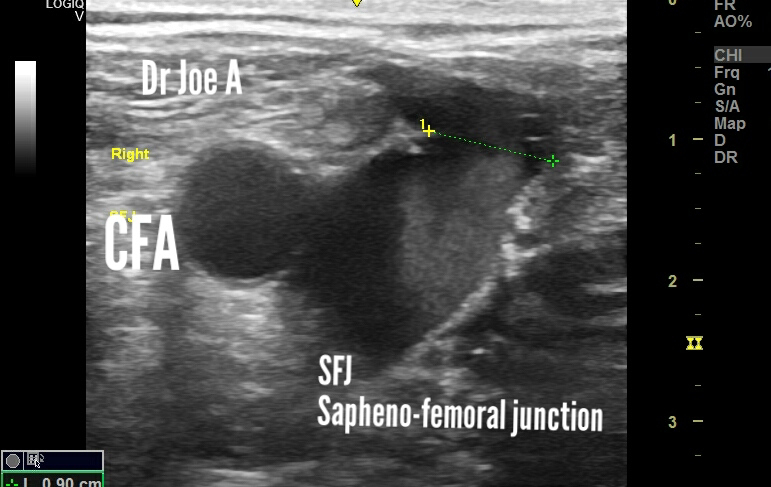Also B mode ultrasound shows smoke sign of severe turbulence in the SFJ, Sapheno-femoral junction.
The valsalva maneuvere shows more than 3 seconds of reversed flow on spectral Doppler ultrasound in the SFJ.
The calf region shows large superficial varicose veins.
What is the smoke sign in sapheno-femoral junction incompetence?
Smoke sign is a significant finding on ultrasound imaging of the veins, especially in cases of sapheno-femoral incompetence. It indicates the presence of turbulent blood flow in the veins, which is a hallmark of venous insufficiency.
Venous insufficiency is a condition in which the veins are not able to properly return blood from the legs to the heart, resulting in blood pooling in the legs and causing symptoms such as swelling, pain, and varicose veins. Sapheno-femoral incompetence is one of the most common causes of venous insufficiency, and the presence of the smoke sign on ultrasound imaging is a key diagnostic finding in this condition.
What is the significance of the smoke sign?
The significance of the smoke sign is that it can help identify the location and extent of venous insufficiency, which can guide treatment decisions. For example, if the smoke sign is localized to the sapheno-femoral junction, this may indicate that the saphenous vein needs to be treated to address the venous insufficiency.
Overall, the smoke sign is a valuable tool in the diagnosis and management of venous insufficiency, and is an important finding for clinicians and sonographers to be aware of when evaluating patients with suspected venous disorders.
What is the cause of the smoke sign?
Smoke sign is typically due to the presence of turbulent blood flow in the veins, rather than stagnation or increased flow.
For more visit:






No comments:
Post a Comment